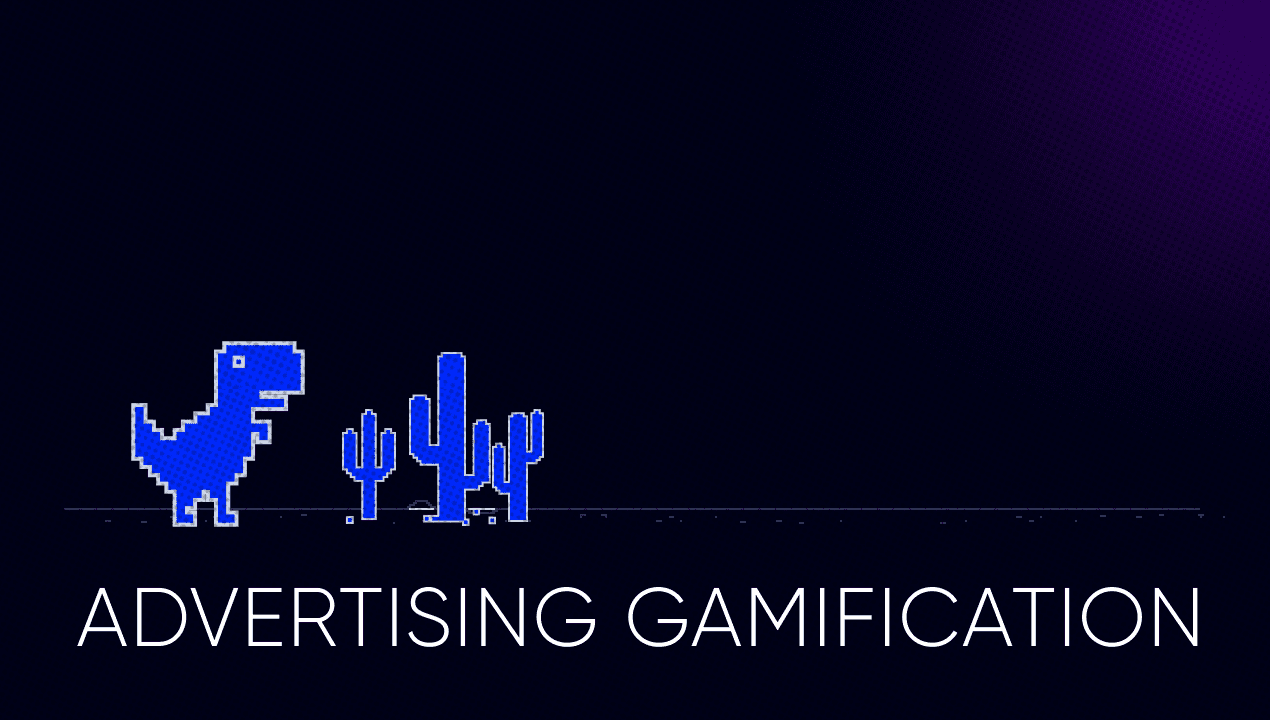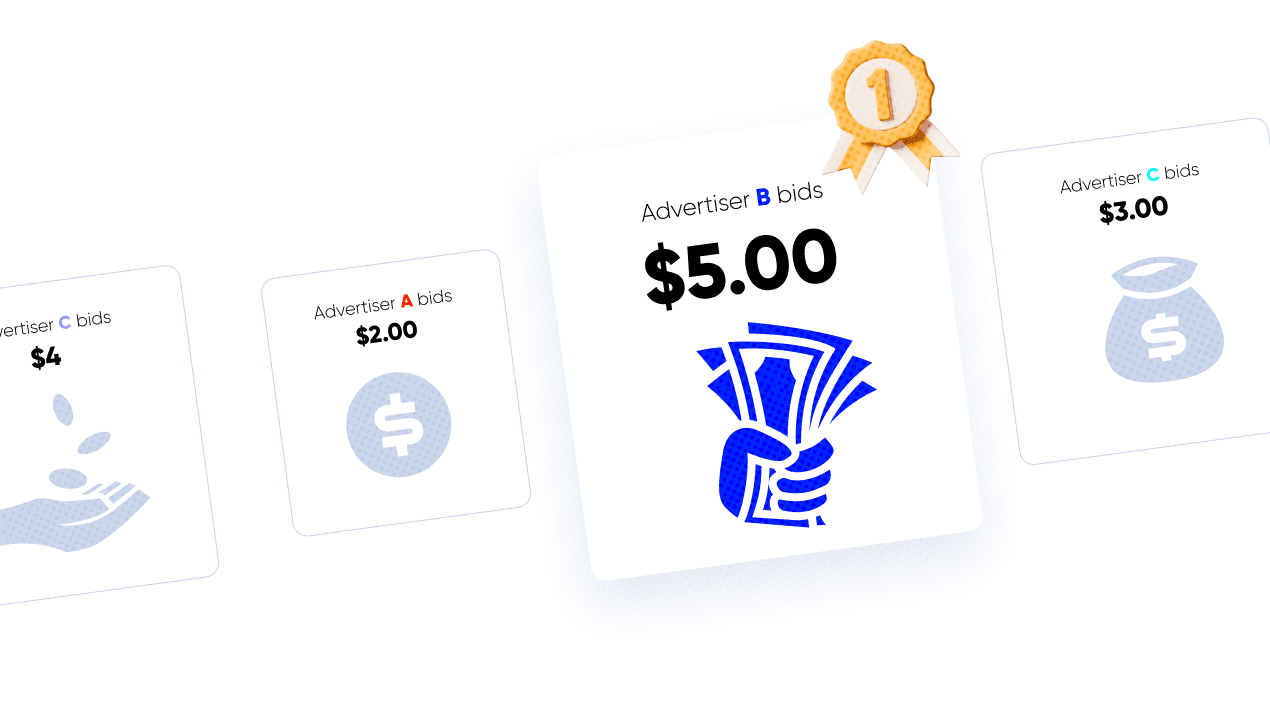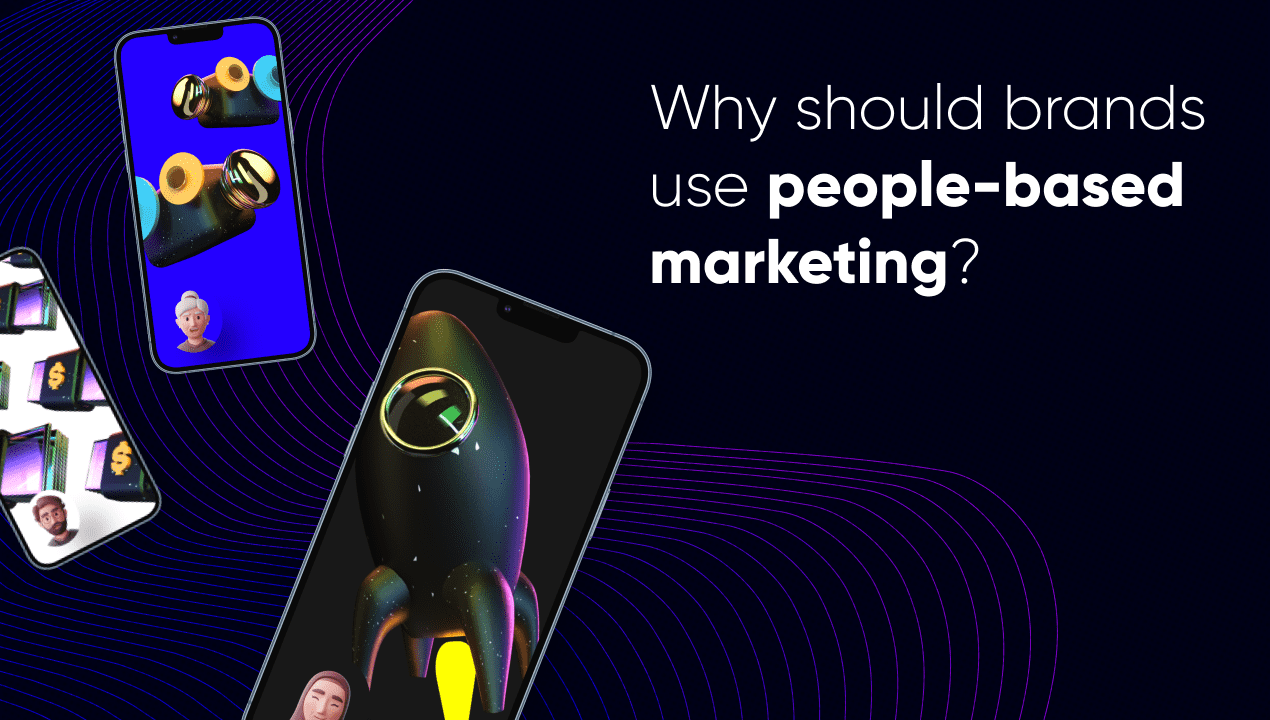
What brands should know about people-based marketing: what is it and how works
- Author: Lizaveta Zhuk
63% of users won’t make a purchase from brands with poor personalization experiences. It refers to digital advertising as well. Without personalization of ad creatives and relevant messages, an ad campaign could fail. So it makes sense for brands to look for a solution that will help brands not only provide personalized experiences for customers but increase brand revenue as well.
People-based marketing can help brands do all of these tasks. So let’s learn more about that in our article.
What is people-based marketing?
People-based marketing is a marketing strategy that uses a more personal approach to increase the efficiency of ad campaigns. The strategy focuses on each customer as a unique user, instead of segmenting the audience into several groups. It helps brands provide users with relevant messages and engage them in more efficient and consequential ways.
In a world where digital ads are widespread, breaking through plenty of banners is increasingly difficult. Advertisers should do much more than simply capture users’ attention for a second. They need to not only increase awareness but to keep customers coming back again and again. That’s where personalized and data-based approaches can play an essential role.
How does people-based marketing work?
People-based marketing utilizes data from both online and offline sources. It takes the data from a brand’s CRM platform such as email, phone numbers, occupation, purchase history, etc. Then this users’ data is connected with the online identities of each person on special platforms. There are two ways that it can identify users in digital:
- Use unique data points to identify users in the online space. A great example of this data is email addresses. A lot of apps, sites, or social networks require an email address to log in. So a platform can find a direct match with a customer.
- Use artificial intelligence for matching. This method combines data with an algorithm to identify a user. It can find a match with IPs of devices, browser history, patterns of online behavior, etc.
The next step is creating detailed and rich customer profiles. In this way, brands will be able to recognize, segment, and reach the exact customer they want to show ads to. Let’s make it clear, this means that instead of targeting women in their 40s who like android smartphones, you can engage with Alex, an owner of an old model of your brand of mobile devices.

Source: MediaPost
In this way, personality-based marketing allows brands to view users as individuals, enabling hyper-personalized targeting and engagement for deep, meaningful connections.
Why should brands use people-based marketing?
This strategy allows an advertiser to target their audience on a personal level. Such type of personalization is necessary for brands considering that 91% of users prefer to make purchases from brands who recognize them, remember and provide relevant offers and recommendations.

Source: business2community
Besides creating a personalized experience, it helps brands:
- Spend an ad budget thoughtfully. Using people-based marketing, a marketer can track an individual online user’s behavior. He will know which channels are more popular among the audience, and which channels they use to make a purchase, and redistribute budgets respectively.
- Understand the target audience better. Brands get the opportunity to know when a user engages with them on social networks, when they browse a brand’s websites, whether they open a brand’s mobile apps, and more. It shows a clear understanding of how the target audience interacts with a brand through the entire customer journey and how to better communicate with the audience at a particular moment.
- Target people, not devices. When users surf the Internet, they constantly switch devices — from a mobile to a desktop, from a laptop to a tablet, and so on. They can use different types of devices at each sales funnel stage. In the case of a people-based marketing strategy, an advertiser knows which device a user has, and which device he uses at each stage of the sale funnel.
- Improve retargeting. If a user clicked on an ad on their laptop but didn’t purchase or filled in a lead form, a people-based marketing can allow brands to retarget that user on another device to better reinforce the message and provide a seamless user experience. By knowing what content these users are interested in, advertisers can make their offers less annoying and more relevant.
- Exclude users who have already done conversions. One of the most notable wasted ad budgets is delivering advertisements to users who have already done conversions. It can be annoying and irrelevant for users and expensive for brands. With there being a lot of ways to conduct purchasing and several devices for doing that, data can be fragmented. It makes it difficult to understand which users make a purchase because of the ad campaign. Using people-based marketing, brands can clearly understand who purchased and on which devices. So they will be able to stop sending further ads after conversion.
- Operate the data in an efficient way. When marketers have a complete picture of their audience, targeting becomes much more effective. They no longer need to guess how to use demographic data in marketing campaigns, they will use it in a more efficient way to set a targeting according to the behavior of different age groups of audience.
- Avoid bots. With people-based marketing tactics, a brand’s ad gets in front of real users, verified people.
How can brands start with people-based marketing?
Nowadays, this strategy has become more popular among brands. So there are some tips for starting with a people-based approach.
- Organize your consumers’ data. Brands should make sure that they collect users’ data in CRM orderly from all resources they use to communicate with the audience. Find a secure CRM with which a marketer can track essential customer data and keep the data clean.
- Increase customers’ data. Brands can use their website or other resources to expand their database. One of the easiest ways to capture important a customer information is giving users the opportunity to share their information during scrolling your site or hosting gated content on your website to drive in new leads, or launching advertising campaigns to attract new consumers and data.
- Don’t stop analyzing the target audience. The more a brand knows about its audience, the more effective and thoughtful its marketing efforts will be. So make sure that you have actual data about brands’ audience, their online behavior, and preferences.
In conclusion
Beyond what a brand sells, people-based marketing seeks to resonate with its target audience on relevant messages, a personalized approach, and data. For the first time it can be difficult, but step by step a brand will be able to create a strategy to operate their data in a better way and resonate with consumers’ needs and preferences.
Programmatic technology can help get more profound insights into your audience. Moreover, it opens up more effective and accurate targeting that brands can use to deliver their messages to a specific user.
Read also



























































